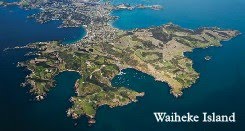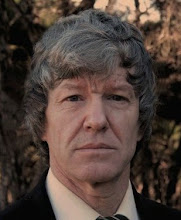The flurry of amalgamations in New Zealand in 1989 got rather carried away, and when some of the country's 'cities' were createdthe small matter of the law was overlooked.
In New Zealand law, no district, no territory can be called a city, or its corporation a city council, unless it satisifies three criteria. It must have a population of at least 50,000. It must be a distinct entity and a major centre of activity in its region. And it must be predominantly urban. (The relevant bit of law, which was the same in 1989, is now in Clause 7 of Schedule 3 of the Local Government Act 2002, which can be read at www.legislation.co.nz).
Auckland 'City', Wellington 'City', Waitakere 'City' and Upper Hutt 'City' are not legally cities, because they are not predominantly urban, and there may be others. The Local Government Commission of 1989 obviously did not check to see if what they were creating complied witht the law.
When Auckland's 154.154 square kilometres was amalgamated with the Hauraki Gulf Island's 475.5 square kilometres on the 1st of November 1989, the new district was only 24.5% urban. No district that is 75.5% village-rural can call itself predominantly urban, so Auckland has not legally been a city for twenty years. Therefore every decision made over the signature, so to speak, of 'Auckland City' since 1/11/1989 has been illegal. Millions of rates notices, for example.
The Local Government Commission says Wellington is 70% rural, Waitakere is 78% rural, Upper Hutt is 92%. 92% baa-lambs, moo-cows, and blokes getting about on farm-bikes, and they called it a city! Big boo-boo, big legal mess.
The amalgamation of the Hauraki Gulf Islands with Auckland in 1989 was therefore illegal. It voided Auckland's city status. It also breached the fundamental of community of interest, because the law makes it very clear that for the sake of achieving good local government the predominantly urban and the predominantly non-urban must be kept separate. Chalk and cheese should not be put together. The two distinct types of community should not be ruled by each other.
That is why the Islands have had chronic problems with Auckland, caused by Auckland's inability to understand a village-rural-island district.
skip to main |
skip to sidebar

Waiheke from the west (the end nearest Auckland)

I live on Waiheke Island, a jewel set in New Zealand's Hauraki Gulf. I am a former member of the Waiheke Community Board, which was rebadged as the Waiheke Local Board in the SuperSilly reorganisation of 2010.
For my over-the-top humorous(?) blog, in which The Fellow Passenger hurls scorn at untoward shennanigans on
Waiheke
and associated untowardishness elsewhere, click on this link: The Lower Deck.
Featured post
ROCKY BAY NEVER WAS OMIHA
A Waiheke Island Myth Part 1 On Waiheke Island, New Zealand, a myth has grown up among a handful of people in the Rocky Bay Village th...
Waiheke Island, New Zealand

Waiheke from the west (the end nearest Auckland)
Search This Blog
Total Pageviews
NOTE ON PAGEVIEWS
Blogger has only been counting views since mid 2009, not from the start of this blog.
Followers
My other Waiheke blog
About Me

- Nobilangelo
- My Christian name is pronounced 'noble-arn-jillo' (i.e., both o's are long, so the first two syllables rhyme with 'noble' not 'hobble'--yes, I know that's obvious, because there's only one 'b' between the 'o' and the 'i', but some people seem to see two b's, hence the English lesson). My surname is pronounced kerra-marliss. I was born, bred and educated in New Zealand, except for an international systems-engineer's course in San Antonio, Texas. I am born-again Christian, a thinker with a very practical turn of mind, a scientist with a particular interest in planet-friendly energy and neuroscience, an engineer (mechanical, industrial and IT systems), an inventor, a Member of the American Association for the Advancement of Science, a writer and poet, a naturist, a designer in different fields, an arranger and composer of symphonic music, a multi-award-winning IT journalist, a photographer, and a practitioner at various times in other hands-on fields including building, metalwork, woodwork, stained-glass and landscaping.